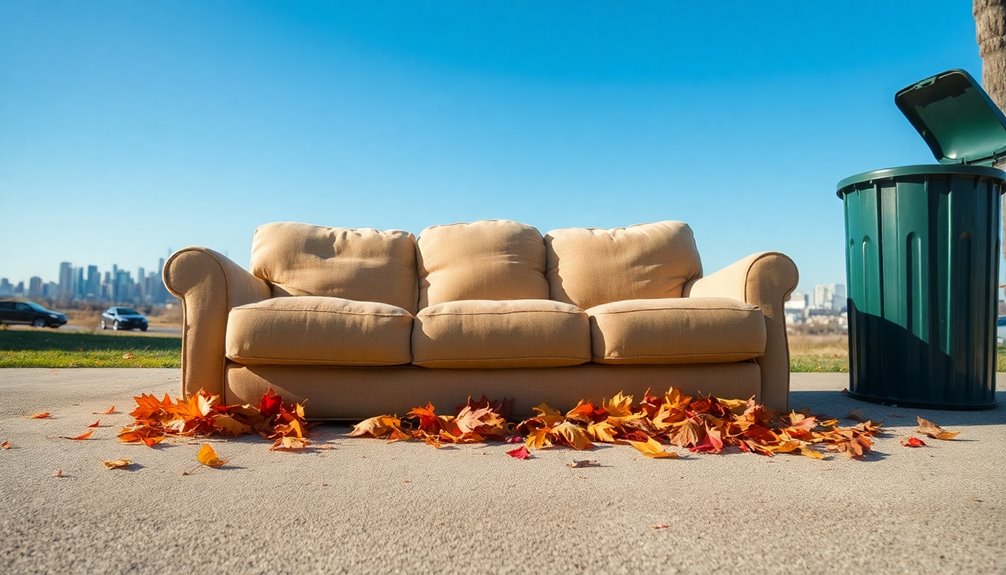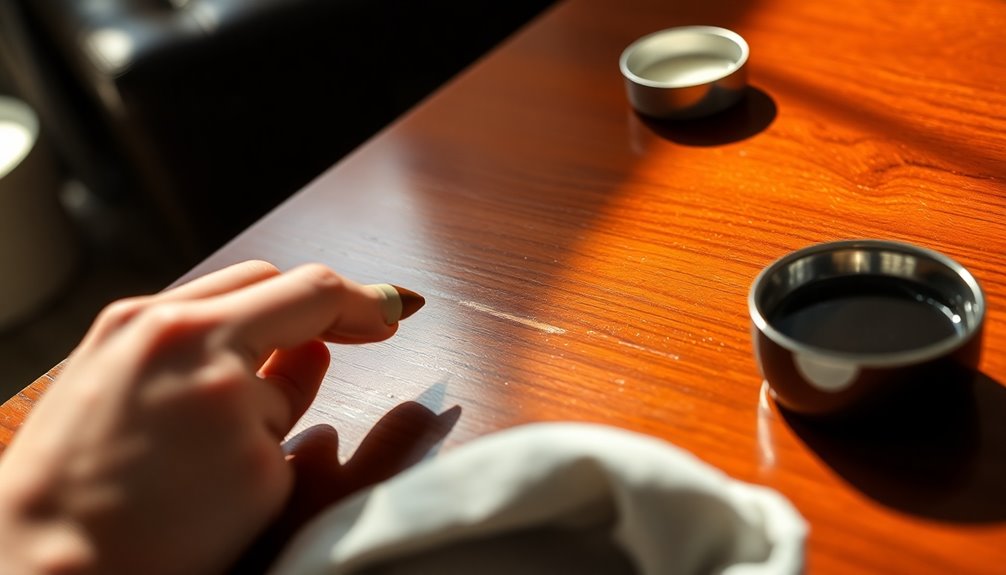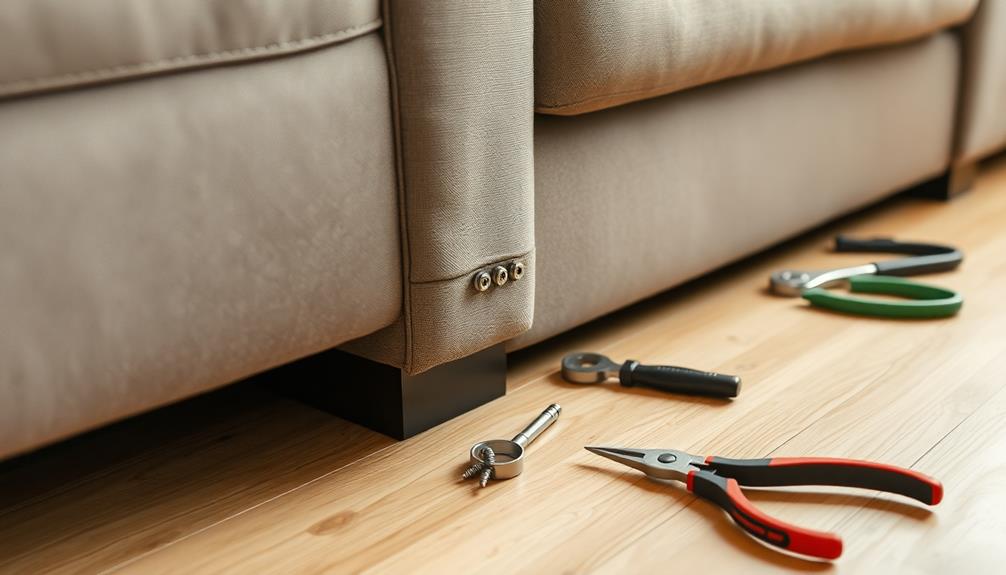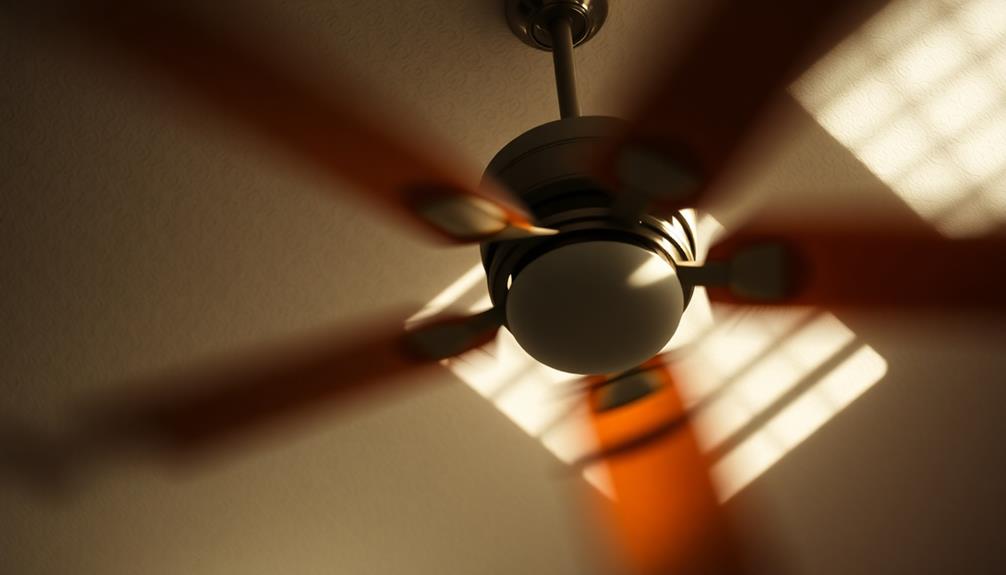To dispose of your old sofa, start by assessing its condition. If it’s still in good shape, consider donating it to local charities like Goodwill or Salvation Army. Many organizations offer pickup services, making it easy for you. If the sofa’s damaged, you might need to check with your local waste management about bulk item disposal. Some stores also offer removal services when you purchase a new sofa. Lastly, recycling options might be available in your area. Want to find out more clever ways to manage your old furniture? There’s plenty more to explore! You can also consider dismantling a sofa step by step if you’re handy and want to save space before disposal. By breaking it down into manageable pieces, you can more easily transport it to the appropriate disposal or recycling facility. Moreover, some parts, like cushions or frames, might be repurposed for DIY projects, giving your old furniture a new life rather than ending up in a landfill.
Key Takeaways
- Check local regulations for sofa disposal, as many areas have specific guidelines for bulky items.
- Consider donating your sofa to local charities like Goodwill or Salvation Army if it's in good condition.
- Research if any local furniture recycling programs accept sofas to promote sustainability.
- Arrange for curbside pickup with your waste management service if they offer bulky item collection.
- Explore online marketplaces or community groups to sell or give away your sofa to someone in need.
Introduction
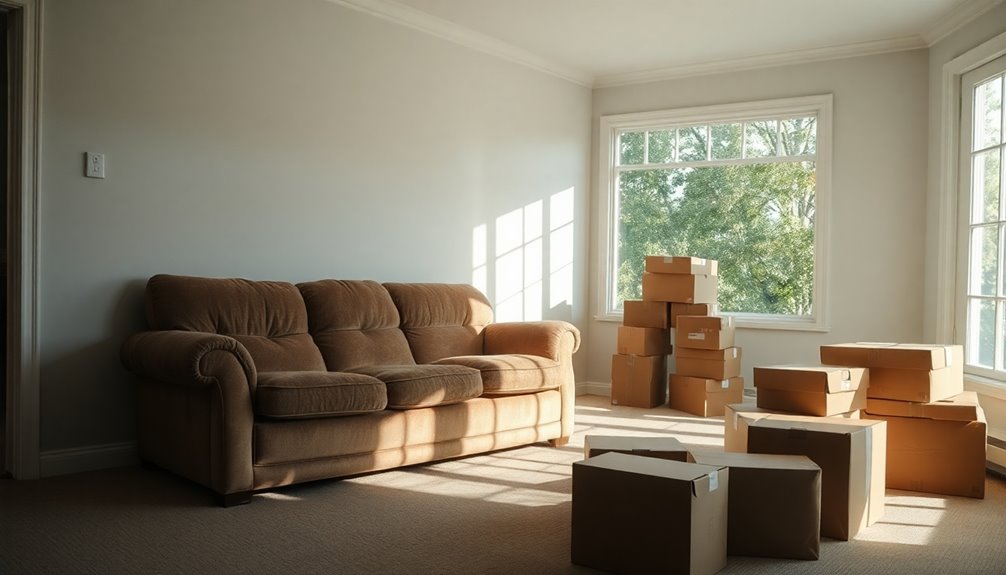
When it comes to keeping your sofa looking its best, knowing how to treat stains and spills is key. You'll want to use routine spot treatments and fabric-specific cleaning techniques to maintain its appearance. And if you ever find yourself facing a red wine spill, having the right approach can save your furniture from permanent damage.
Routine Spot Treatment
Addressing stains promptly on your sofa is crucial for maintaining its appearance and longevity. A routine spot treatment can significantly improve your sofa's lifespan by preventing stains from setting in. When a spill occurs, grab a clean cloth and a suitable cleaning solution. Always test the solution on a hidden area of the fabric first to ensure it won't cause discoloration or damage.
Gently blot the stain with the cloth, avoiding any rubbing, as that can spread the stain and harm the fabric fibers. For water-based stains, a mixture of mild soap and water works well. If you're dealing with oil-based stains, you may need a specialized solvent for effective stain removal.
After treating the stain, allow the area to air dry completely. This step is essential, as it helps prevent further damage and ensures that the cleaning solution is adequately absorbed. To protect your sofa from future stains, consider applying a fabric protector after the area has dried. Implementing these routine spot treatment steps can keep your sofa looking fresh and extend its life, saving you from costly replacements.
Fabric-Specific Cleaning Techniques
Cleaning a sofa isn't a one-size-fits-all process; different fabrics demand tailored techniques to maintain their look and feel. For cotton upholstery, a simple mixture of mild soap and water works wonders. If you've got a microfiber sofa, consider using a blend of vinegar and water to tackle stains effectively. Leather sofas require regular conditioning to keep them supple; a damp cloth and pH-balanced cleaner help in maintaining their finish.
Synthetic fabrics like polyester are more durable and can handle rigorous cleaning methods, such as steam cleaning or solvent-based cleaners. Always check the manufacturer's care label for specific instructions, and don't forget to test any cleaning solution on a small, inconspicuous area first.
If your gently used sofa requires deeper cleaning or has stubborn stains, professional upholstery cleaning services can be a lifesaver. They're equipped with fabric-specific cleaning techniques that ensure your sofa gets the care it needs without causing damage. When the time comes for disposal services, remember that it's vital to consider the fabric type and condition to determine the best disposal method for your sofa. Regular maintenance of upholstery can significantly extend its lifespan and keep it looking fresh.
Tackling Red Wine Spills
Red wine spills can be a nightmare for any sofa owner, especially after you've put in the effort to keep your upholstery looking great. To effectively tackle the situation, act quickly. Start by blotting the excess wine with a clean, dry cloth. This prevents the stain from spreading further into the fabric.
Next, create a cleaning solution using one part dish soap, one part white vinegar, and two parts water. Apply this mixture to the stain with a cloth, gently dabbing rather than rubbing to lift the wine from the fabric. If the stain proves stubborn, consider using a commercial upholstery cleaner tailored to your sofa's fabric type, following the manufacturer's instructions.
After treating the stain, rinse the area with cold water and blot it dry. This step helps remove any soap residue and prevents further staining. Before you proceed with any cleaning solution, always test it on a discreet area of the sofa to ensure it won't damage or discolor the fabric. By following these steps, you can effectively tackle red wine spills and keep your sofa looking its best.
Sofa Stain Resistance Treatments

When choosing a sofa, consider using stain-resistant fabric to keep it looking fresh. There are protective fabric options available that repel spills, making clean-up a breeze. Plus, regularly rotating your cushions can help maintain their shape and prolong the effectiveness of any stain treatments.
Using Stain-Resistant Fabric
A sofa made with stain-resistant fabric can be a game changer for busy households. These fabrics create a protective barrier that repels liquids and stains, making your life easier when spills happen. Treatments like Teflon and Scotchgard coat the fibers, preventing absorption and allowing for quick clean-up. You can choose to have these treatments applied professionally or tackle it as a DIY project with easy-to-use products available for home application.
Regular maintenance is crucial to keep your sofa looking great. Vacuuming and promptly blotting any spills will enhance the effectiveness of the stain-resistant fabric. Keep in mind that these treatments might need reapplication over time, especially after deep cleaning or with heavy use.
If you're looking to replace old furniture, consider investing in a sofa with stain-resistant fabric. It can save you the hassle of furniture removal and the stress of dealing with stains. When it's time to dispose of your sofa, remember to check local recycling centers, as they may accept furniture donations or offer recycling options to reduce waste. Additionally, maintaining a clean home environment supports a healthier lifestyle by promoting cleanliness and hygiene.
Protective Fabric Options Available
Protective fabric options for sofas can significantly enhance your furniture's durability and ease of maintenance. One popular choice is protective fabric treatments like Teflon or Scotchgard, which create a barrier around the fibers. This barrier allows liquids to bead up, making spills easy to wipe away rather than being absorbed, keeping your sofa looking fresh and clean.
Many manufacturers offer pre-treated fabrics, but if you've already purchased a sofa, you can still apply after-market treatments at home. Regular reapplication of these stain resistance treatments is crucial, typically every 6 to 12 months, to maintain their effectiveness.
Consider opting for sofas made from inherently stain-resistant materials, such as microfiber or synthetic blends. These fabrics naturally resist wear and tear, providing an added layer of protection.
If your sofa's seen better days, and you plan to upgrade, think about donating it to local donation centers. They often accept old appliances and furniture, ensuring your old sofa finds a new home while you enjoy the benefits of protective fabric treatments on your new piece.
Regularly Rotate Cushions
Regularly rotating your sofa cushions is a simple yet effective way to maintain their shape and extend the life of your furniture. By making it a habit to rotate cushions every few weeks, you'll help distribute wear evenly, preventing one area from becoming excessively stained or flattened. This practice not only keeps your sofa looking fresh but also contributes to overall comfort and aesthetics.
Some manufacturers even recommend flipping the cushions to expose different sides, which can further mitigate the effects of spills and stains. If you've invested in stain-resistant treatments or fabric protectors, rotating cushions can enhance their effectiveness, providing an extra layer of defense against dirt and spills. Additionally, using essential oils for stain resistance can offer a natural way to keep your sofa fresh and clean.
When it's time to dispose of items that are too worn out, consider donating your sofa to a local donation center, especially if it still has life left in it. You can also shop for new furniture online to find a replacement that fits your style and needs. Regularly rotating your cushions is just one step in caring for your sofa, ensuring that it remains a cherished part of your home for years to come.
Upholstery Seam Reinforcement

When considering upholstery seam reinforcement, you should also think about the overall frame integrity of your sofa. Strengthening seams can help maintain the cushion's shape, but if the frame is compromised, it can affect the entire piece. Plus, don't forget about leather conditioning and repair to keep your sofa looking its best.
Frame Integrity Concerns
Assessing the integrity of your sofa's frame is crucial for maintaining its stability and longevity. You should inspect the joints and connections for any signs of weakness or damage. A compromised frame can lead to instability, making your sofa less safe to use. If you notice any warping or loosening, consider reinforcing it with corner blocks or braces to enhance durability.
As you check the upholstery seams, make sure they're tightly stitched with heavy-duty thread. This reinforcement helps prevent tearing and increases the sofa's lifespan. Regularly keeping an eye on these seams will allow you to catch any wear early, giving you a chance to make timely repairs.
If you find that the frame is beyond repair, it might be time to consider whether to throw away the sofa. You can contact junk removal services to assist in proper disposal, or think about donating it to a local charity if parts are still usable. Ensuring that frame integrity is intact not only saves you money but also contributes to sustainable practices in furniture disposal.
Leather Conditioning and Repair
Your sofa's leather deserves proper care to ensure it remains both beautiful and durable. Regular leather conditioning is crucial; it helps maintain the material's suppleness, preventing cracks and extending the lifespan of your sofa upholstery. When you condition the leather, you keep it moisturized and protected from wear and tear.
If you notice any fraying or tearing, it's time for some repair work. Upholstery seam reinforcement is essential, especially in high-stress areas. You can achieve this using a strong adhesive or stitching techniques. Always opt for leather-specific products for these tasks, as they're formulated to work with the unique properties of leather.
When reinforcing seams, make sure the thread color matches your leather to maintain a cohesive appearance and avoid noticeable repairs. For the best results, follow the manufacturer's guidelines on leather care and repair. This not only preserves the aesthetic appeal but also ensures the structural integrity of your sofa. By investing time in leather conditioning and repair, you can keep your sofa looking great and functioning well for years to come.
Cushion Fluffing Techniques
Fluffing your sofa cushions regularly is essential for maintaining their shape and extending the life of your upholstery. Start by using a combination of hand fluffing and a vacuum cleaner with an upholstery attachment. This helps remove dirt while redistributing the fill evenly, ensuring your cushions stay comfortable and supportive.
Next, inspect the seams of your upholstery for any fraying or weakness. If you find any loose areas, grab a sewing machine or a needle and thread to secure them. This reinforcement prevents further damage and prolongs the life of your cushions.
To enhance comfort, consider adding extra batting or foam inserts to your cushion covers. This addition not only improves support but also helps maintain their original structure. Don't forget to periodically rotate and flip your cushions. This simple action promotes even wear and prevents uneven compression, keeping your seating area plush and inviting.
Cushion Firmness Adjustments
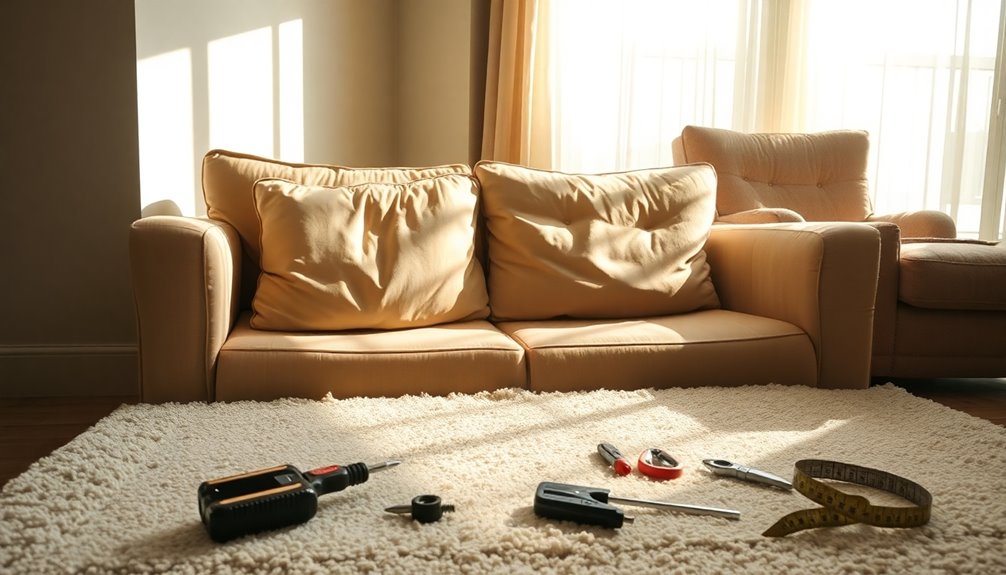
Adjusting the firmness of your sofa cushions can significantly enhance your comfort and support. If you've got a used sofa and find the cushions too soft or too firm, don't fret—you can easily make adjustments. To increase cushion firmness, consider replacing worn-out foam with higher-density foam. This upgrade will provide better support and durability over time.
If you prefer softer cushions, adding a layer of plush polyester or down can enhance your comfort while keeping some structural integrity. You can also experiment with inflatable inserts, allowing you to customize the cushion's air content for a perfect fit.
Regularly flipping and rotating your cushions is another key strategy. This practice helps maintain their shape and firmness, preventing uneven wear. If you're getting rid of your sofa soon, remember these tips can also apply to donation items. Ensuring the cushions are in good condition not only boosts your comfort but can make your sofa more appealing to potential new owners. With these adjustments, you'll maximize the life of your cushions, making your sofa an even more enjoyable place to relax.
Seasonal Maintenance Tips
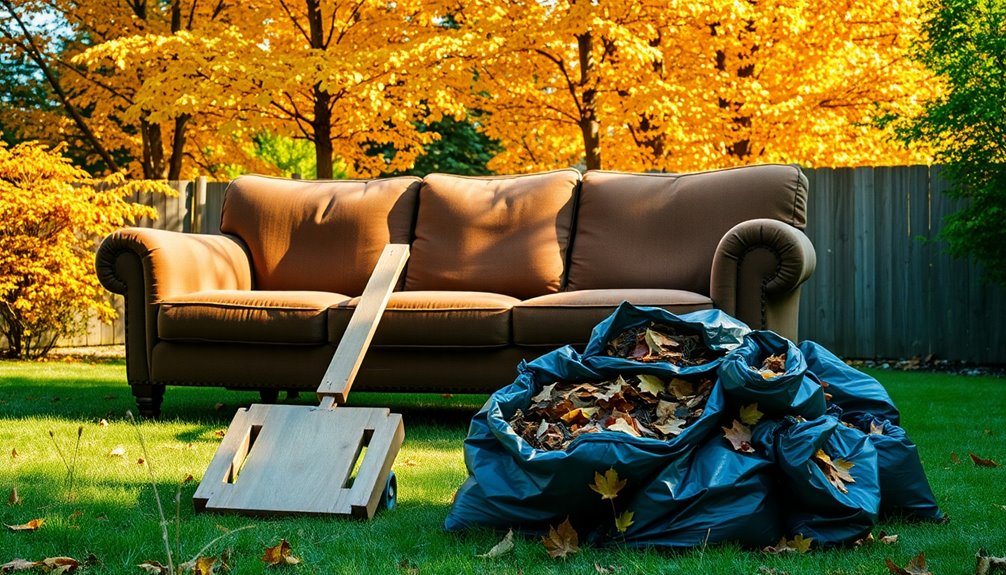
Maintaining your sofa goes beyond just adjusting cushion firmness; regular seasonal upkeep is key to preserving its appearance and comfort. Start by inspecting your sofa for signs of wear and tear, like stains or structural issues, especially during seasonal changes when humidity and temperature fluctuate. Clean and condition the upholstery every few months with suitable cleaners for the fabric type to maintain its longevity.
Rotate cushions and pillows periodically to ensure even wear and prevent sagging, particularly after heavy use during gatherings or holidays. Scheduling a professional deep cleaning at least once a year will help remove dirt, allergens, and odors that accumulate over time, enhancing your sofa's lifespan.
If you live in a humid area, consider using a dehumidifier to prevent mold and mildew growth, particularly if your sofa's made of natural materials. With these seasonal maintenance tips, you can keep your used furniture looking its best. Should you ever decide to part with it, local charities often accept gently used sofas, allowing you to dispose of it quickly and efficiently while helping others in your community.
Conclusion
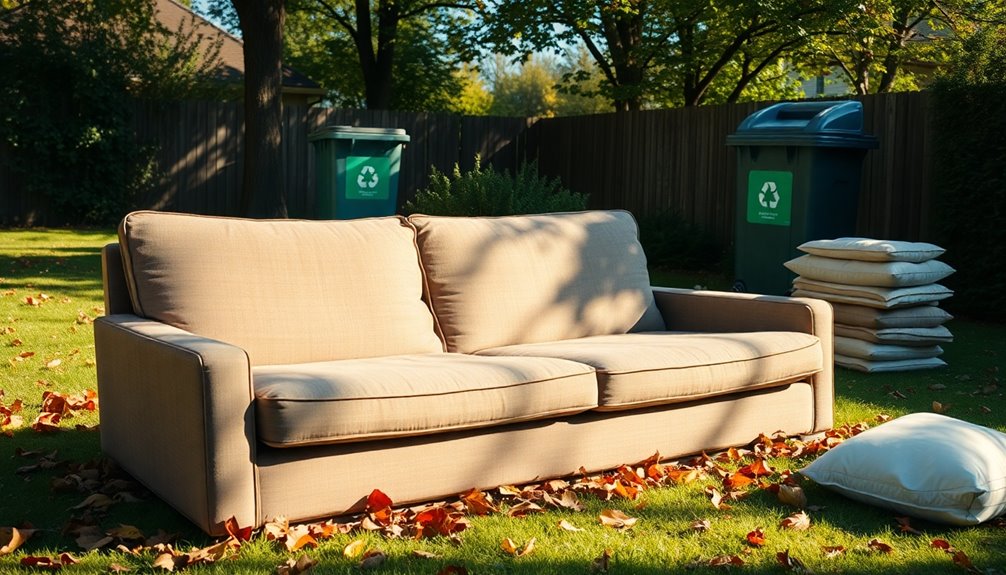
Disposing of a sofa can seem daunting, but with the right approach, it can be straightforward and rewarding. Start by evaluating your sofa's condition. If it's still in good shape, consider donating it to local charities like Goodwill. Many of these organizations offer pickup services, making it easy for you to part with your furniture.
If your sofa is beyond repair, don't worry. Scheduling a pickup with a junk removal service can provide a hassle-free, environmentally friendly solution. Just make sure to check your local regulations regarding waste disposal to avoid any fines.
For those who want to be more environmentally conscious, look for recycling centers that accept upholstered furniture. They can ensure proper dismantling for material recovery.
Lastly, if you want to make a little money or help someone in your community, consider utilizing online marketplaces like Facebook Marketplace or hosting a garage sale. These options not only clear your space but also connect you with people who might appreciate your sofa. With these strategies in mind, you can dispose of your sofa responsibly and efficiently.
Frequently Asked Questions
How to Get Rid of an Old Sofa?
Getting rid of an old sofa can be straightforward. First, check its condition—you might be able to donate it or sell it online. If it's beyond repair, consider junk removal services that handle large items. You can also contact your local waste management for curbside pickup on designated days. If you're feeling handy, disassemble it for easier transport to a landfill or recycling center. Just make sure to follow local disposal regulations.
How Do I Get Rid of a Large Couch in My House?
To get rid of a large couch in your house, start by scheduling a pickup with a junk removal service for a quick solution. You can also check local charities for donation options—they often pick up for free. If you're up for it, list your couch on resale platforms like Facebook Marketplace. Finally, if it's too damaged, contact waste management for bulk pickup or visit a landfill for responsible disposal.
What Can You Do With a Broken Couch?
You can do several things with a broken couch. If it's not too damaged, consider reupholstering or replacing the cushions to make it suitable for resale or donation. Local charities like Goodwill might accept it for parts. Alternatively, you could place it on your curb with a "For Free" sign, attracting neighbors interested in DIY projects. If all else fails, junk removal services can help dispose of it for a fee.
How to Get Rid of a Couch in LA?
If you're looking to get rid of a couch in LA, you've got several options. You can schedule a bulky item pickup through the sanitation department for a convenient curbside collection. If your couch is in good shape, consider donating it to local charities like Goodwill or the Salvation Army. You might also sell or give it away on platforms like Craigslist or Facebook Marketplace for a quick solution.
